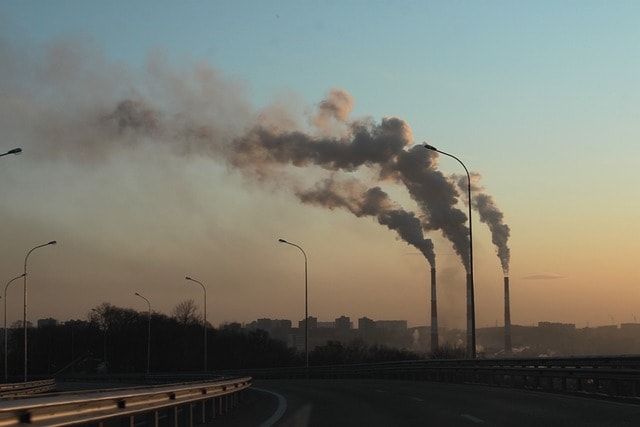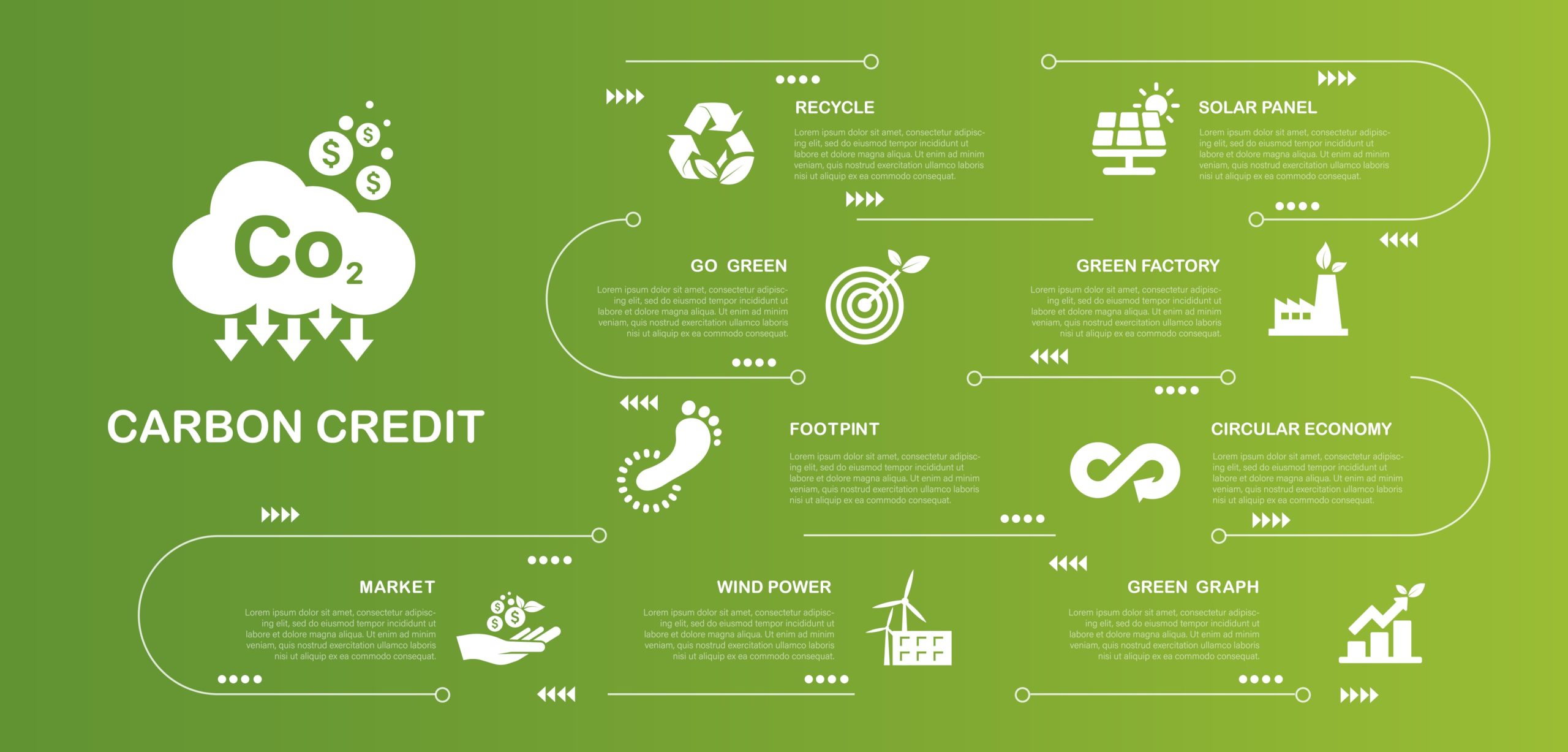What Are Carbon Emissions: Understanding how they Impact on Our Planet

Carbon emissions also refer to the release of carbon dioxide (CO2) and other greenhouse gases into the atmosphere. These emissions primarily result from burning fossil fuel combustion of fuels such as coal, oil, and natural gas. Carbon dioxide is the most prevalent greenhouse gas, but methane and nitrous oxide also contribute significantly to global warming.
GHG emissions originate from various sources like transportation, industry, electricity production, construction materials and even agriculture. Each economic sector plays a role in the overall carbon footprint, which is the total amount of greenhouse gases emitted by an individual, organization, or country.
Carbon emissions primarily originate from burning fossil fuels, deforestation, and industrial processes. These emissions contribute significantly to global warming and climate change by increasing the concentration of greenhouse gases in the atmosphere. As temperatures rise, we witness more frequent and severe weather events, such as hurricanes, droughts, and heatwaves. Greenhouse gases like carbon dioxide (CO2), methane (CH4), nitrous oxide (N2O), and fluorinated gases (F-gases) trap heat in the atmosphere, which results in global warming. The increased acidity of oceans, resulting from absorbed carbon dioxide, disrupts marine life and coral reefs, further jeopardizing biodiversity.
Ultimately, the impact of carbon emissions extends beyond environmental consequences, affecting human health, food security, and economic stability, necessitating urgent and collective action to mitigate their effects. Understanding the sources of carbon emissions is crucial for devising effective strategies to mitigate their impact. The more we know about where these emissions come from, the better equipped we are to tackle the problem.
Carbon emissions are a hot topic these days, and for good reason. They’re intricately linked to climate change, which affects everything from the weather to the food we eat. This blog post aims to demystify carbon emissions, explaining what they are, why they matter, and what we can all do to reduce them. By the end of this post, you’ll have a clear understanding of carbon emissions and their far-reaching impacts on our planet.
The Importance of Understanding Carbon Emissions
Understanding carbon emissions is crucial for several reasons. First, they are the leading cause of climate change, contributing to rising global temperatures, melting ice caps, and more frequent extreme weather events. Understanding carbon emissions can help in developing climate mitigation strategies to reduce their impact. By comprehending how these emissions work and their sources
Greenhouse Gases and Their Impact
Overview of Greenhouse Gases
Greenhouse gases, including CO2, CH4, N2O, and F-gases, retain heat in the atmosphere, contributing to global warming. These gases are released through various activities, from agriculture to industry to everyday human behaviors. Carbon sequestration plays a crucial role in mitigating the impact of greenhouse gases by removing carbon dioxide from the atmosphere. Methane emissions, in particular, have a high immediate impact on global warming potential, contributing significantly to irreversible changes in climate and
The Role of Greenhouse Gas Emissions in Global Warming
Greenhouse gas emissions are central to global warming, one of today’s most urgent challenges. These gases, including carbon dioxide (CO2), methane (CH4), nitrous oxide (N2O), and fluorinated gases, are released mainly through human activities such as burning fossil fuels for energy production, transportation, and industrial processes. Methane also comes from coal, oil, natural gas production, and agriculture, while nitrous oxide arises from agricultural and industrial activities. Though less common, fluorinated gases have a high global warming potential and are used in various industrial applications.
These gases trap heat in the atmosphere, causing the “greenhouse effect,” which raises Earth’s average temperature. This heat leads to more extreme weather events like hurricanes, droughts, and heatwaves. It also accelerates the melting of polar ice caps and glaciers, resulting in rising sea levels that threaten coastal areas. Higher CO2 levels increase ocean acidity, disrupting marine life and damaging coral reefs, further threatening biodiversity.
The impacts of greenhouse gas emissions are extensive, affecting the environment, human health, food security, and economic stability. For instance, increased temperatures worsen air pollution, causing respiratory issues, while disrupted weather patterns affect food production and prices. The economic costs of extreme weather events can be severe for communities and nations.
To mitigate these impacts of global emissions, urgent action is needed to reduce emissions by transitioning to renewable energy, improving energy efficiency, adopting sustainable agriculture, and enhancing regulations. Understanding and addressing the role of greenhouse gas emissions in global warming is crucial for ensuring a sustainable and resilient future for our planet.
Sources of Carbon Emissions

Electric Power Sector Emissions
The electric power sector is a major contributor to greenhouse gas emissions, primarily due to the burning of fossil fuels like coal, natural gas, and oil for electricity generation. These activities release significant amounts of carbon dioxide (CO2) and other harmful pollutants into the atmosphere. The sector’s emissions are a leading cause of global warming and climate change, impacting air quality and public health. Reducing emissions requires a shift to renewable energy sources such as wind, solar, and hydroelectric power, as well as improvements in energy efficiency. This shift not only helps mitigate climate change but also promotes a cleaner, more sustainable energy future. Addressing emissions in the electric power sector is crucial for achieving global climate goals and ensuring a healthier planet for future generations.
Transportation Sector Emissions
The transportation sector is a significant source of greenhouse gas emissions, mainly due to the combustion of fossil fuels like gasoline and diesel in vehicles. This sector contributes heavily to global warming and air pollution, releasing carbon dioxide (CO2), methane (CH4), and nitrous oxide (N2O). Emissions from cars, trucks, airplanes, and ships not only degrade air quality but also pose serious health risks. Reducing these emissions requires a transition to electric vehicles, improvements in fuel efficiency, and increased use of public transportation. Adopting sustainable practices in transportation is crucial for mitigating climate change, improving public health, and creating a sustainable future. Addressing emissions in this sector is essential for achieving environmental and health goals globally.
Industry Sector Emissions
The industrial sector is a major contributor to greenhouse gas emissions, accounting for a substantial portion of global CO2, methane (CH4), and nitrous oxide (N2O) emissions. These emissions primarily result from the combustion of the fossil fuel use of fuels for energy, chemical reactions during manufacturing processes, and waste management practices. Industries such as cement, steel, and chemical production are particularly significant emitters indirect emissions. Industrial emissions contribute heavily to global warming, air pollution, and health problems, including respiratory and cardiovascular diseases.
Mitigating industrial emissions requires a multifaceted approach. Implementing energy efficiency measures, adopting clean technologies, and transitioning to renewable energy sources are critical steps. Additionally, improving waste management practices and capturing and utilizing emissions through carbon capture and storage (CCS) technologies can significantly reduce the sector’s environmental impact. Regulatory frameworks and incentives can also drive industries to adopt greener practices.
Investing in research and development to innovate low-emission industrial processes is essential. Collaboration between governments, industries, and research institutions can accelerate the transition to a sustainable industrial sector. Reducing emissions in this sector is crucial for combating climate change, protecting public health, and ensuring a sustainable future. Addressing industrial emissions is a key component of global efforts to meet climate targets and promote environmental sustainability.
Commercial and Residential Sector Emissions
The commercial and residential sectors are significant contributors to greenhouse gas emissions, primarily through the consumption of energy for heating, cooling, lighting, and appliances. These emissions predominantly come from the burning of various fossil fuel fuels such as natural gas, oil, and coal in buildings. Additionally, electricity consumption, which often relies on both fossil fuel combustion and-fuel-based power plants, adds to the carbon footprint of these sectors.
Heating and cooling systems are major sources of emissions in both commercial and residential buildings. Inefficient insulation, outdated HVAC systems, and reliance on non-renewable energy sources contribute to high energy consumption and subsequent emissions. Lighting, especially when using traditional incandescent bulbs, and the use of various electrical appliances also play a significant role in the overall emissions profile.
Mitigating emissions in the commercial and residential sectors requires a combination of energy efficiency improvements and a transition to renewable energy sources. This includes upgrading to energy-efficient appliances, improving building insulation, and adopting smart thermostat systems that optimize energy use. Transitioning to LED lighting and incorporating energy-efficient designs in new constructions can significantly total emissions and reduce energy demand.
The adoption of renewable energy sources, such as solar panels and wind turbines, for electricity generation in homes and commercial buildings can also greatly decrease emissions. Government policies, incentives, and building codes that promote energy efficiency and renewable energy adoption are crucial in driving these changes.
Improving public awareness and encouraging behavior changes, such as reducing energy consumption and supporting green building practices, are also essential. Addressing emissions from the commercial and residential sectors is vital for achieving broader climate goals, reducing energy costs, and improving air quality and public health.
Agriculture Sector Emissions
The agriculture sector is a significant source of greenhouse gas emissions per capita, contributing substantially to global warming. Key emissions from agriculture include methane (CH4) from livestock digestion and rice paddies, nitrous oxide (N2O) from fertilized soils and animal manure, and carbon dioxide (CO2) from deforestation and the use of fossil fuels in farm machinery. These emissions not only exacerbate climate change but also impact air and water quality, affecting both human health and ecosystems.
Mitigating emissions in the agriculture sector involves adopting sustainable practices such as precision farming, which optimizes the use of fertilizers and reduces nitrous oxide emissions. Implementing rotational grazing and improving livestock diets can decrease methane emissions from livestock. Additionally, protecting and restoring forests, adopting agroforestry practices, and enhancing soil carbon sequestration through conservation tillage can significantly reduce CO2 emissions.
Transitioning to organic farming, reducing food waste, and promoting plant-based diets are also effective strategies for reducing agricultural emissions. Government policies and incentives play a crucial role in human emissions by encouraging farmers to adopt sustainable practices. Investment in research and development can lead to innovations that further decrease the sector’s carbon footprint.
Addressing direct greenhouse gas emissions due from the agriculture sector is essential for combating climate change, preserving biodiversity, and ensuring food security. Sustainable agricultural practices not only help reduce greenhouse gas emissions but also improve soil health, water conservation, and resilience to climate impacts. A concerted effort from farmers, policymakers, and consumers is necessary to achieve a sustainable and low-emission agricultural sector.
Land Use, Land-Use Change, and Forestry Sector Emissions and Sequestration
The Land Use, Land-Use Change, and Forestry (LULUCF) sector plays a dual role in climate change, acting both as a source of greenhouse gas emissions and as a significant carbon sink. Emissions from this sector arise primarily from deforestation, land clearing for agriculture, and other changes in land use. These activities release large amounts of carbon dioxide (CO2) stored in trees and soil into the atmosphere, contributing to global warming.
Deforestation, especially in tropical regions, is a major driver of CO2 emissions. When forests are cleared or burned, the carbon stored in trees is released, and the land often becomes a source of emissions if it is converted to agriculture or other non-forest uses. Additionally, practices such as peatland drainage and soil disturbance further exacerbate the release of greenhouse gases, including methane (CH4) and nitrous oxide (N2O).
Conversely, the LULUCF sector also has a critical role in carbon sequestration—the process of capturing and storing atmospheric CO2. Forests, wetlands, grasslands, and other ecosystems absorb CO2 through photosynthesis, acting as carbon sinks. Effective forest management, reforestation, afforestation, and the restoration of degraded lands can enhance this natural sequestration capacity.
To mitigate emissions and enhance sequestration, several strategies can be employed. Protecting existing forests from deforestation and degradation is paramount. Implementing sustainable land management practices, such as agroforestry and conservation agriculture, can reduce emissions from land-use changes while improving soil health and productivity. Reforestation and afforestation efforts, along with the restoration of wetlands and other carbon-rich ecosystems, can significantly increase the amount of carbon sequestered.
Policy measures, including stronger enforcement of land protection laws, incentives for sustainable land use, and support for conservation projects, are essential for achieving these goals. International cooperation and funding are also critical, particularly in developing countries where deforestation rates are high.
The LULUCF sector’s ability to both emit and sequester greenhouse gases makes it a crucial focus for climate action. Enhancing carbon sequestration while reducing emissions from land-use activities is vital for mitigating climate change, preserving biodiversity, and supporting sustainable development. Addressing this sector holistically can contribute significantly to global efforts to stabilize the climate and protect natural resources for future generations.
Global Carbon Emissions

Global Greenhouse Gas Emissions: Trends and Projections
Global emissions of greenhouse gases have been increasing steadily, with a significant acceleration in recent decades. Carbon neutrality, which refers to achieving net-zero carbon emissions, is crucial in addressing these trends and mitigating the anthropogenic climate change and future impacts. Projections indicate that without significant intervention, these global emissions alone will continue to rise, exacerbating the climate crisis.
Which Countries Emit the Most Carbon Dioxide Emissions?
China, the United States, and the European Union are the top three emitters of carbon dioxide with highest per capita emissions now. Carbon pricing is a critical economic policy that can influence national carbon emissions by assigning a cost to emitting carbon dioxide, thereby encouraging reductions. The per capita greenhouse gas emissions are highest in the United States and Russia. These countries have a significant impact on global emission trends and play a crucial role in international climate policies.
How Have Global Carbon Dioxide Emissions Changed Over Time?
Since 1990, global carbon dioxide emissions have increased by over 50%, with a significant acceleration of emissions growth in recent decades. The concept of a ‘carbon budget’ is crucial here, as it refers to the allowable amount of carbon dioxide emissions to limit global warming. This increase annual emissions is primarily due to industrialization, population growth, and increased energy consumption.
Measuring and Reducing Carbon Emissions
How Do We Measure or Estimate Carbon Dioxide Emissions?
Atmospheric carbon dioxide levels, resulting from cumulative emissions from human activities and the burning of fossil fuels, can be measured through various methods, including energy statistics, atmospheric measurements, and life-cycle assessments. The term ‘carbon footprint’ refers to the total amount of greenhouse gases produced by human activities and is crucial for understanding the impact of these cumulative emissions together. Accurate measurement is essential for developing effective emission reduction strategies.
Methods for Reducing Greenhouse Gas Emissions
Reducing greenhouse gas emissions can be achieved through several methods: Carbon sequestration, the process of capturing and storing atmospheric carbon dioxide, is a crucial method for mitigating climate change.
-
Transitioning to Renewable Energy: Utilizing solar, wind, and other renewable energy sources to replace fossil fuels.
-
Increasing Energy Efficiency: Implementing energy-efficient technologies and practices in industries, homes, and transportation.
-
Implementing Carbon Capture and Storage Technologies: Capturing carbon emissions from industrial sources and storing them underground.
The Impact of Carbon Emissions
The Effects of Carbon Dioxide Emissions on the Environment
Total greenhouse gas emissions contribute to global warming, ocean acidification, and climate change, leading to severe environmental consequences such as:
-
Rising Sea Levels: The melting of ice caps and glaciers is causing sea levels to rise, posing a threat to coastal communities.
-
Extreme Weather Events: Increased frequency and intensity of hurricanes, droughts, and heatwaves.
-
Ecosystem Disruption: Changes in temperature and precipitation patterns affect biodiversity and ecosystem health.
A crucial aspect of mitigating these effects is the role of a carbon sink, which refers to natural systems that absorb more carbon dioxide than they release.
The Consequences of Inaction on Global Warming
Failure to reduce greenhouse gas emissions will lead to catastrophic climate change, with severe impacts on ecosystems, human health, and the economy. The concept of a ‘carbon budget’ is crucial here, as it defines the allowable amount of carbon dioxide emissions to limit global warming. The longer we delay action, the more difficult and costly it will be to mitigate these effects.
Practical Steps to Reduce Carbon Emissions

Reducing Energy Consumption
One of the most effective ways to reduce carbon per capita greenhouse gas emissions, is by lowering energy consumption. Reducing energy consumption directly impacts your carbon footprint, which is the total amount of greenhouse gases produced by human activities. This can be achieved through:
-
Energy-Efficient Appliances: Using appliances that consume less energy.
-
Insulation and Weatherproofing: Improving insulation in homes to reduce heating and cooling needs.
-
Behavioral Changes: Simple actions like turning off lights and unplugging electronics when not in use.
Switching to Renewable Energy
Reducing emissions requires a shift to renewable energy sources such as wind, solar, and hydroelectric power, as well as improvements in energy efficiency. Achieving carbon neutrality is a key goal in this transition, as it involves balancing emitted carbon with an equivalent amount of carbon removal or offset. Many governments offer incentives for installing renewable energy systems, making it easier for individuals and businesses to make the switch.
Adopting Sustainable Transportation
Reducing emissions and carbon intensity from the transportation sector can be achieved by:
-
Using Public Transport: Opting for buses, trains, and other forms of public transportation.
-
Cycling and Walking: Reducing reliance on cars for short trips.
-
Electric Vehicles: Transitioning to electric vehicles, which produce zero tailpipe emissions.
Additionally, adopting sustainable transportation can be complemented by carbon offset initiatives, which involve funding projects that reduce or capture carbon dioxide to compensate for future emissions elsewhere.
Reducing Waste
Waste reduction is another key strategy for lowering carbon emissions. Reducing waste also helps lower the carbon footprint, which is the total amount of greenhouse gases produced by human activities. This includes:
-
Recycling and Composting: Reducing the amount of waste sent to landfills.
-
Minimizing Single-Use Plastics: Using reusable products to decrease plastic waste.
Supporting Carbon Offset Projects
Carbon offset projects, such as reforestation and renewable energy initiatives, can help balance out carbon emissions. By investing in these projects, individuals and businesses can offset their carbon footprint and support global efforts to reduce greenhouse gas emissions.
The Role of Governments and Organizations

Government Policies and Regulations
Governments play a crucial role in reducing carbon emissions through policies and regulations that direct emissions elsewhere: A significant measure in this regard is the implementation of a carbon tax, which is levied on the carbon content of fuels to incentivize the reduction of carbon emissions. The Contribution of Working Group III to the Sixth Assessment Report of the Intergovernmental Panel on Climate Change provides comprehensive lists and examples of opportunities to reduce greenhouse gas emissions in various sectors such as transportation, agriculture, industry, land use, homes and businesses, and electric power production.
-
Promote Renewable Energy: Offering incentives for renewable energy projects.
-
Set Emission Standards: Implementing strict emission standards for industries and vehicles.
-
Encourage Energy Efficiency: Supporting programs that promote energy-efficient technologies and practices.
Corporate Responsibility
Businesses also have a significant role in tackling climate change. Carbon trading, which involves the buying and selling of carbon credits to offset emissions, is an important aspect of corporate responsibility. Corporate responsibility includes:
-
Sustainable Practices: Implementing sustainable practices in operations and supply chains.
-
Carbon Reporting: Measuring and reporting carbon emissions to identify reduction opportunities.
-
Investing in Innovation: Developing new technologies and processes that reduce carbon emissions.
Understanding and reducing carbon emissions is essential for mitigating climate change and ensuring a sustainable future. By making small changes in our daily lives, supporting renewable energy, and advocating for strong government policies, we can all contribute to a healthier planet. The journey towards reducing carbon emissions requires collective action and commitment from individuals, businesses, and governments alike.
Addressing anthropogenic carbon dioxide emissions, particularly from the flaring and venting of natural gas in oil wells, is crucial to reducing overall atmospheric carbon dioxide emissions. Let’s take the first step today in reducing our carbon footprint and making a positive impact on the environment.
